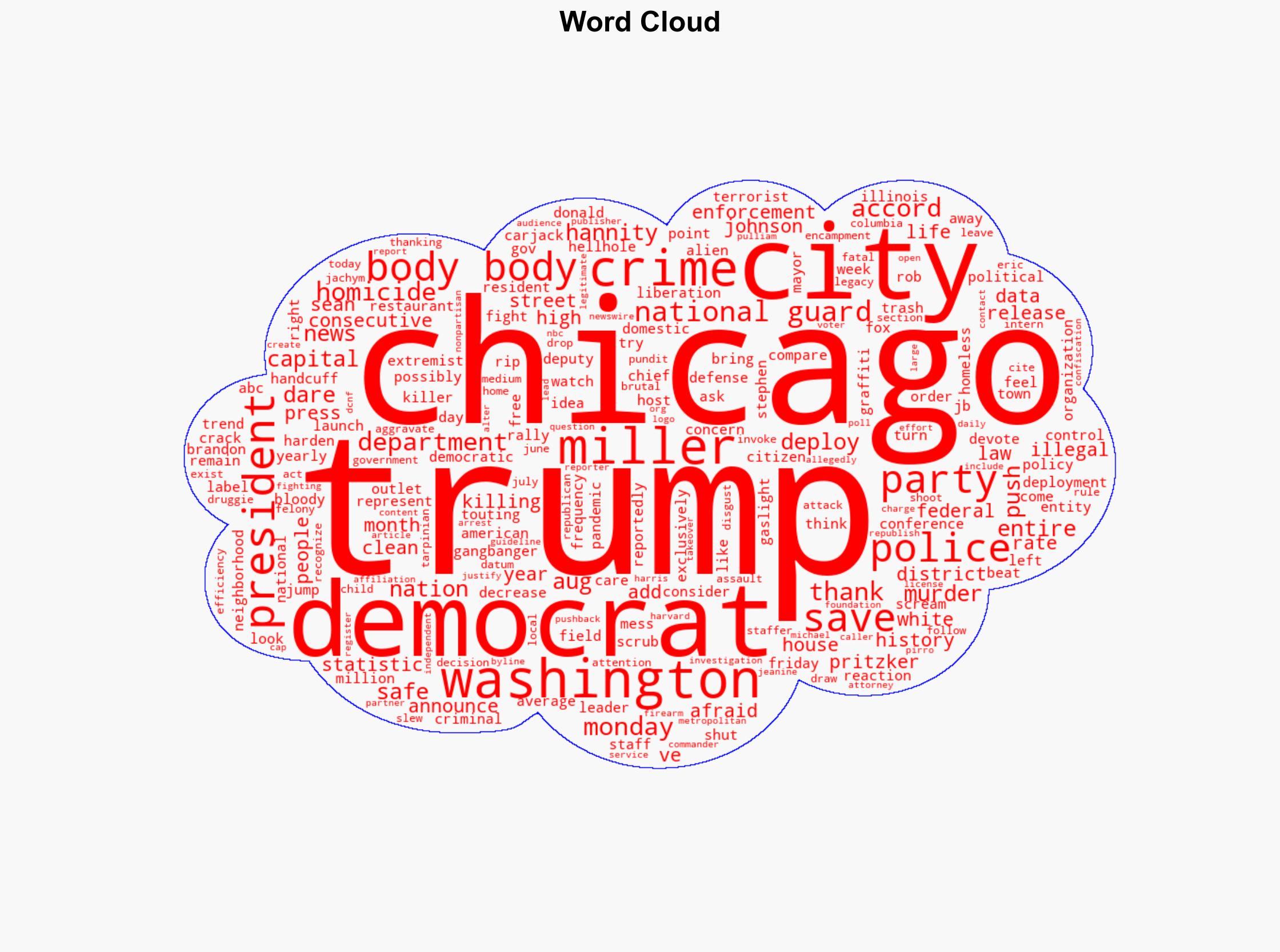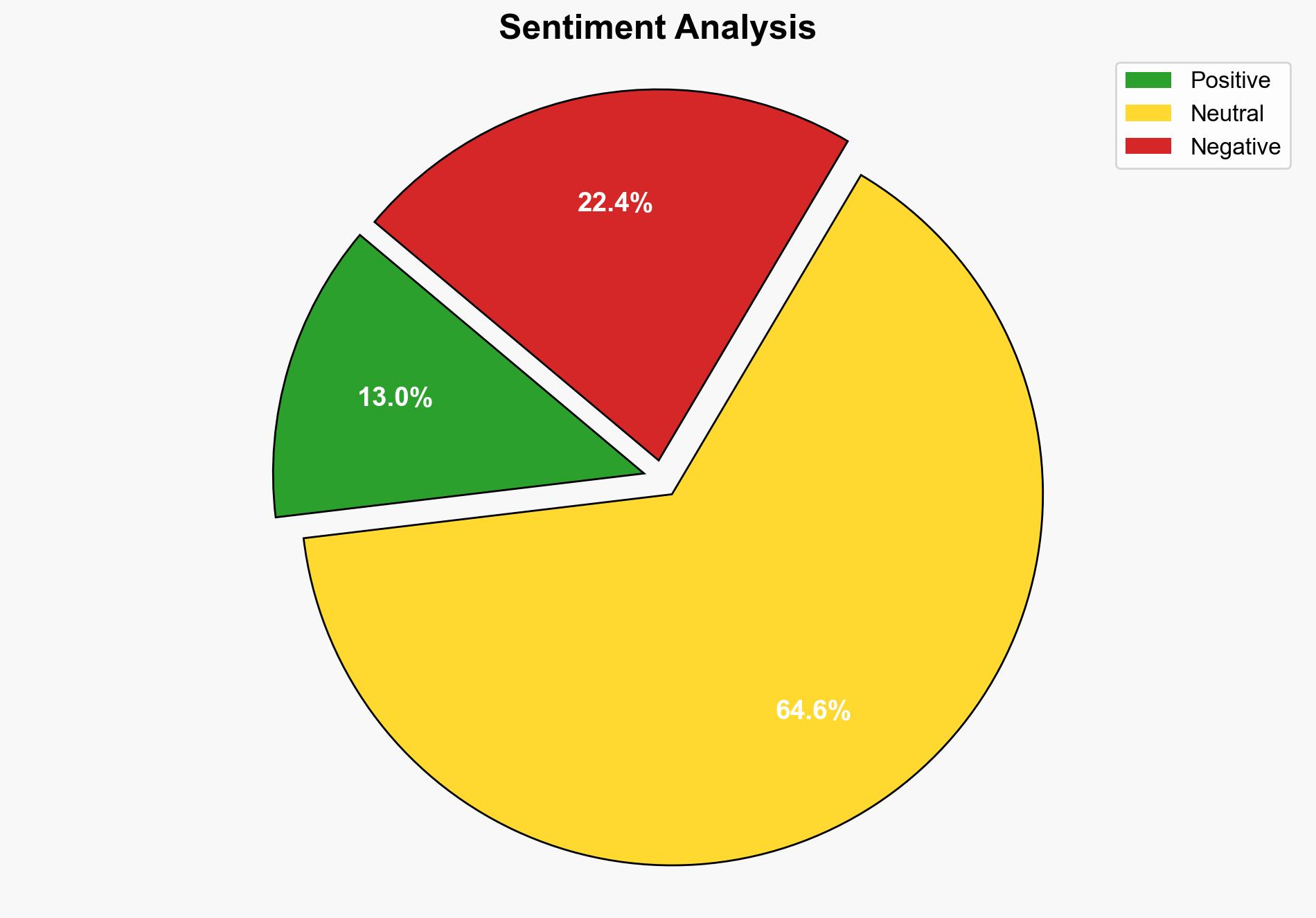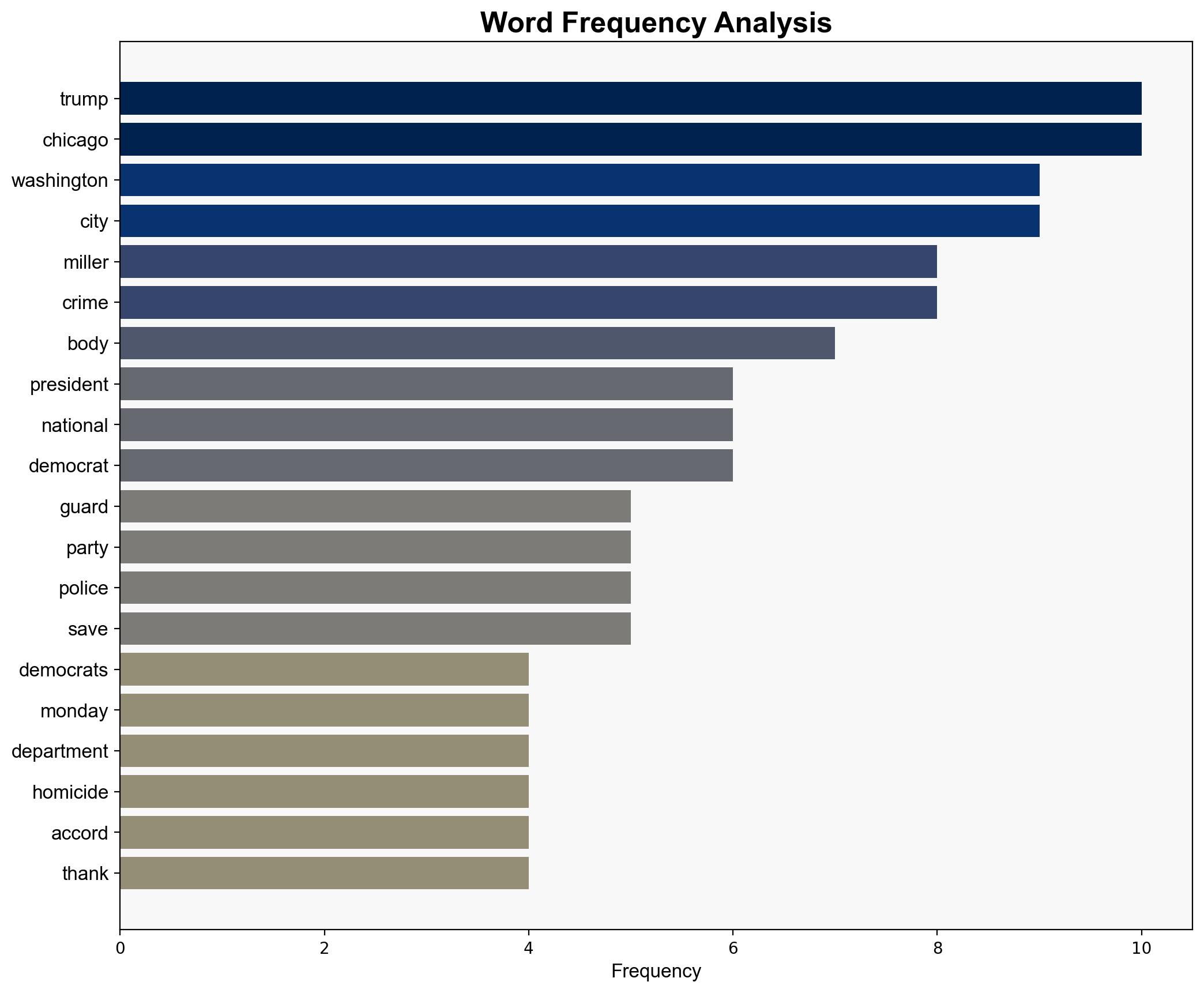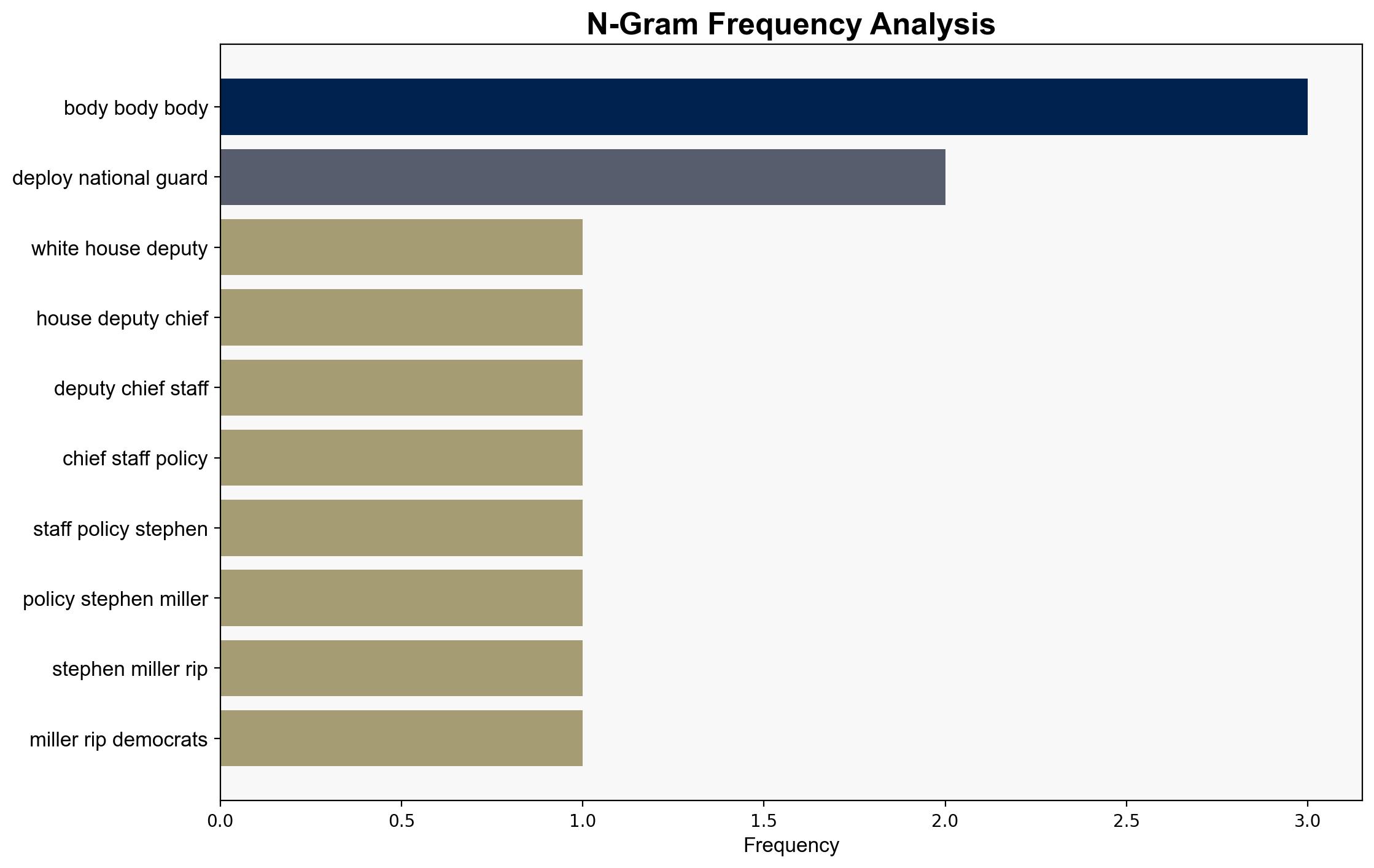Domestic Extremist Organization Stephen Miller Rips Dems While DC Saw Body After Body After Body Before Trump – The Daily Caller
Published on: 2025-08-26
Intelligence Report: Domestic Extremist Organization Stephen Miller Rips Dems While DC Saw Body After Body After Body Before Trump – The Daily Caller
1. BLUF (Bottom Line Up Front)
The analysis suggests a polarized narrative around crime and political accountability, with two primary hypotheses emerging. The most supported hypothesis indicates a strategic political maneuver to frame crime reduction efforts as partisan successes or failures. Confidence level: Moderate. Recommended action: Enhance cross-party dialogue and data transparency to mitigate misinformation and political polarization.
2. Competing Hypotheses
1. **Hypothesis A**: The narrative is a strategic political maneuver by Stephen Miller and allies to frame the Democratic Party as ineffective in crime control, thereby justifying federal interventions and bolstering support for Trump-era policies.
2. **Hypothesis B**: The narrative reflects genuine concern over crime rates, with a focus on leveraging federal resources to address urban crime, independent of political affiliation.
Using ACH 2.0, Hypothesis A is better supported due to the consistent framing of Democrats as ineffective and the timing of statements aligning with political agendas. Hypothesis B lacks consistent evidence of bipartisan engagement or independent crime data validation.
3. Key Assumptions and Red Flags
– **Assumptions**: Hypothesis A assumes political motivations behind crime statistics and narratives. Hypothesis B assumes a non-partisan approach to crime reduction.
– **Red Flags**: Potential bias in data interpretation, selective reporting, and lack of independent crime data verification.
– **Blind Spots**: Over-reliance on partisan sources without cross-referencing with neutral data or perspectives.
4. Implications and Strategic Risks
– **Patterns**: Increasing politicization of crime statistics could exacerbate public distrust and hinder effective policy implementation.
– **Cascading Threats**: Potential for increased social unrest if narratives further polarize communities.
– **Economic and Psychological Dimensions**: Economic impacts from perceived crime rates could deter investment; psychological effects include heightened fear and anxiety among residents.
5. Recommendations and Outlook
- Enhance bipartisan efforts to address crime, focusing on data transparency and community engagement.
- Scenario Projections:
- Best: Cross-party collaboration leads to effective crime reduction and increased public trust.
- Worst: Continued polarization results in ineffective policies and increased social unrest.
- Most Likely: Incremental improvements with ongoing political tensions.
6. Key Individuals and Entities
– Stephen Miller
– Donald Trump
– J.B. Pritzker
– Brandon Johnson
7. Thematic Tags
national security threats, political polarization, urban crime, federal intervention





